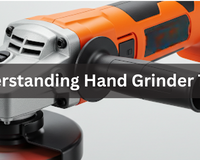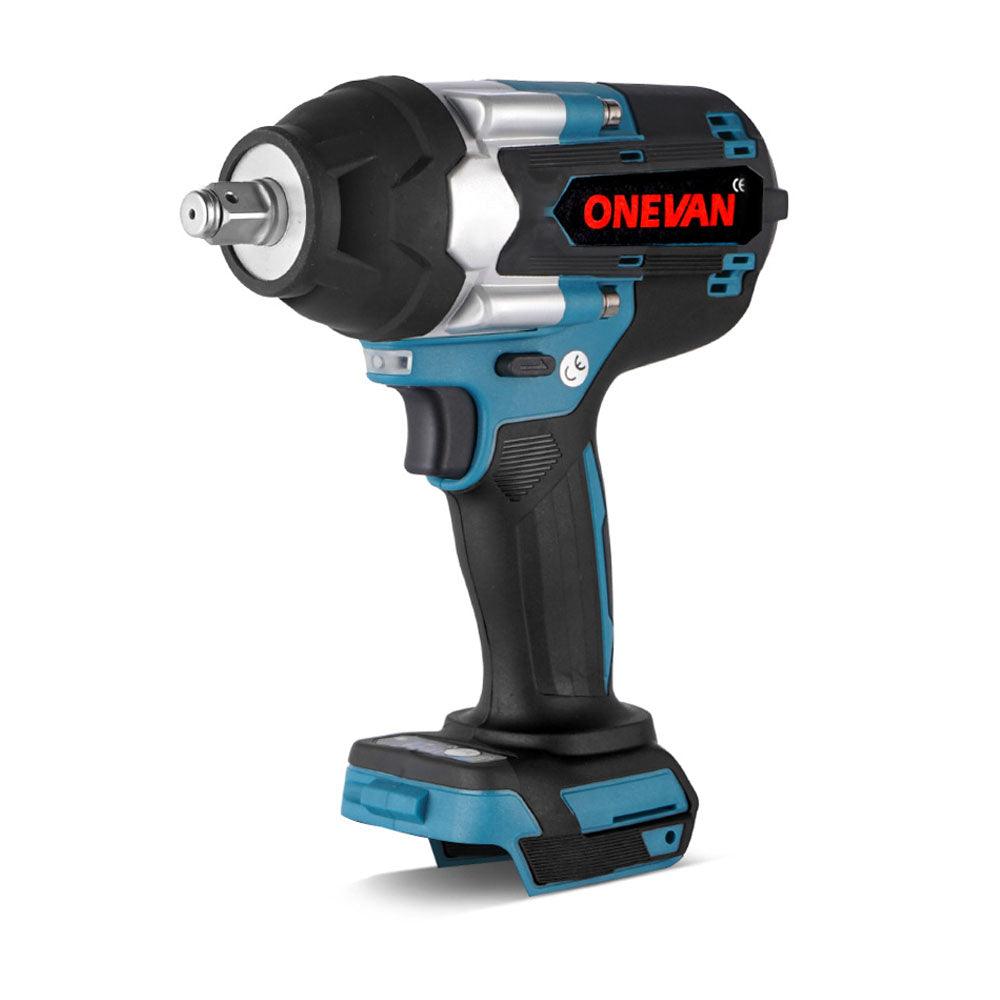Por fin quieres afrontar un proyecto de bricolaje que llevas años posponiendo. Sin embargo, la pregunta es cómo empezarlo con una sierra circular sin riesgo de lesiones. No hay problema: las sierras circulares parecen intimidantes, pero son fáciles de usar una vez que les coges el truco. Esta guía cubrirá los aspectos básicos, desde entender la sierra hasta hacer el primer corte. Recuerda que en EE. UU. se producen más de 40 000 lesiones al año a causa de las sierras eléctricas. ¡La seguridad es lo primero!
1. ¿Qué es una sierra circular y por qué necesitas una?
En esta sección, comprenderá los fundamentos de una sierra circular. También conocerá sus componentes principales, tipos, beneficios y usos comunes.
¿Qué es una sierra circular?
Una sierra circular es una herramienta de corte motorizada. Utiliza una hoja redonda que gira sobre un eje. Esta rotación le permite cortar diversos materiales. La madera, el plástico y el metal fino son objetivos comunes. Seleccionar la hoja correcta es crucial para cortar diferentes materiales con eficacia.
Las sierras circulares se diferencian de las sierras de mano en que son eléctricas, no manuales. Esta potencia motorizada permite un corte más rápido y eficiente en comparación con los métodos manuales. Muchos aficionados al bricolaje las reconocen. Las sierras circulares tienen hojas redondas y un diseño portátil que les da un aspecto distintivo. El sonido de la sierra y el aroma a madera cortada son típicos de los proyectos de bricolaje.
Componentes clave de una sierra circular
1) Motor
Esta es la fuente de energía de la sierra circular. Proporciona la fuerza de rotación necesaria para girar la hoja.
2) Hoja
Una herramienta de corte circular, disponible en varios tipos (p. ej., para madera, metal, mampostería), que se fija al eje del motor. Es desmontable y reemplazable.
3) Placa base (zapata)
Una plataforma plana y estable que descansa sobre la pieza de trabajo, proporcionando una superficie de corte uniforme y guiando la sierra.
4) Protector de la cuchilla
Una característica de seguridad que cubre la cuchilla cuando no está cortando activamente, minimizando el riesgo de lesiones accidentales.
5) Ajuste de profundidad
Un mecanismo que permite al usuario controlar la profundidad del corte ajustando hasta dónde se extiende la hoja debajo de la placa base.
6) Ajuste del bisel
Un control que permite al usuario inclinar la placa base con respecto a la cuchilla, lo que permite realizar cortes en ángulo.
7) Mango
El agarre proporciona al usuario control y estabilidad durante la operación.
8) Disparador
El interruptor activa el motor y comienza a girar la cuchilla.
9) Bloqueo de la hoja
Un mecanismo que asegura la hoja, haciendo que los cambios de hoja sean más seguros y fáciles.

Tipos de sierras circulares
Sierras circulares con cable
Las sierras con cable utilizan alimentación eléctrica directa, lo que permite un suministro de energía constante. Son ideales para trabajos pesados y prolongados.
Sierras circulares inalámbricas
Las sierras circulares inalámbricas utilizan baterías recargables . Esto proporciona una gran movilidad. Son útiles en zonas sin tomas de corriente. ONEVAN fabrica herramientas inalámbricas . Las herramientas ONEVAN suelen utilizar sistemas de baterías intercambiables.
Sierras circulares neumáticas
Las sierras neumáticas utilizan aire comprimido. Son comunes en entornos industriales. Ofrecen alta potencia y durabilidad.
Beneficios de usar una sierra circular
Portátil y eficiente
Estas sierras son portátiles. Su diseño permite acercarlas al material, reduciendo la necesidad de mover piezas pesadas. Esta portabilidad es muy útil para proyectos grandes o para trabajar en espacios reducidos.
Opción rentable
Las sierras circulares son relativamente más económicas en comparación con las sierras de mesa grandes. Por lo tanto, son una buena opción para principiantes. También son rentables para quienes buscan un presupuesto ajustado.
Velocidad de corte rápida
La hoja tiene una alta velocidad de rotación, lo que permite realizar cortes rápidos sin esfuerzo. Esto reduce considerablemente el tiempo de finalización de los proyectos y es mucho más rápido que usar una sierra de mano.
Cortes precisos y de calidad
Usar la cuchilla correcta y mantener un control firme dará como resultado cortes limpios y precisos. Los sistemas de guía y profundidad ajustables mejoran la precisión de corte. Con práctica, podrá lograr resultados de aspecto profesional.
Potente para trabajos difíciles
Otra ventaja importante de las sierras circulares son sus potentes motores. Estos permiten que las sierras circulares corten fácilmente materiales gruesos y densos, lo cual es esencial para la construcción pesada y la carpintería estructural.
Adaptable para diversos materiales
Puedes cambiar las hojas de una sierra circular. Esto te permite cortar diferentes materiales. Madera, plástico y metal son algunos ejemplos. Esta adaptabilidad reduce la necesidad de muchas herramientas especializadas.
Usos comunes de una sierra circular
Enmarcando como un campeón
¿Necesitas construir paredes o una terraza? Las sierras circulares son tus aliadas. Esos cortes precisos garantizan que tu estructura tenga un aspecto profesional y bien elaborado. ¡Integridad estructural garantizada!
¿Madera contrachapada? No hay problema
¿Fabricando estanterías empotradas? Estas sierras cortan láminas de contrachapado como si fueran mantequilla. Piezas del tamaño perfecto siempre. La herramienta de tus sueños de bricolaje, aquí.
Héroe del corte de pernos
Las reparaciones del hogar requieren longitudes de vigas exactas. La sierra circular es la solución, realizando cortes rápidos y precisos que mantienen la estructura sólida y eliminan la necesidad de cortes desiguales.
Cortes transversales suaves
¿Quieres cortes impecables a lo largo de la veta de la madera? Con esta herramienta, parece fácil. Bordes lisos con aspecto profesional, incluso para aficionados de fin de semana.
Cortes en ángulo elegantes
Marcos de fotos, molduras personalizadas... ¿esos cortes angulares tan chulos? Sí, la sierra circular los hace. De repente, ya no solo estás trabajando, sino creando.
Cortando tablas como un profesional
¡Adiós a la agotadora sierra de mano! Con estas sierras, los cortes largos y rectos parecen fáciles. Anchos de tabla uniformes sin esfuerzo.
Maestro de materiales
Cambia la cuchilla; de repente, estarás cortando PVC, metal fino o cualquier cosa. Una herramienta, infinitas posibilidades, te brinda comodidad y conveniencia. Una herramienta, infinitas posibilidades, te brinda comodidad y conveniencia.
2. Sierra circular vs. sierra de calar vs. sierra de mesa: Diferencias clave
¿Cuál es la diferencia entre una sierra circular, una sierra de calar y una sierra de mesa? Analicemos las diferencias fundamentales y otras características.
Mecanismo de corte
Sierra circular: recta y potente
Una sierra circular utiliza una hoja redonda. Esta hoja gira y corta en línea recta. Se guía la sierra a través del material. Es potente y eficiente para cortes básicos.
Rompecabezas: detallado y curvo
Una sierra de calar utiliza una hoja delgada. Esta hoja se mueve hacia arriba y hacia abajo. Este movimiento permite realizar cortes intrincados y curvos. Puedes crear diseños detallados imposibles con una sierra circular.
Sierra de mesa: estacionaria y precisa
Una sierra de mesa es diferente. La hoja es fija y apunta hacia arriba. Se presiona el material contra la hoja, lo que permite realizar cortes muy precisos y rectos. Esta herramienta es ideal para piezas de madera grandes y planas.
Usos y aplicaciones
Sierra circular
Ideal para cortes rectos y largos. Maneja bien madera de entramado y contrachapado. Se usa frecuentemente en obras.
Rompecabezas
Ideal para cortes curvos y detallados. Se utiliza para cortes interiores, como sumideros en encimeras.
Sierra de mesa
Perfecta para cortes rectos precisos y repetidos. Excelente para cortar madera en el taller.
Portabilidad
Sierra circular
Es muy portátil, liviano y cabe en una caja de herramientas, lo que hace que sea fácil trasladarlo a diferentes lugares de trabajo.
Rompecabezas
También es portátil, aunque a menudo se utiliza para trabajos más detallados en el sitio.
Sierra de mesa
No es portátil. Es pesado y requiere un espacio de trabajo específico. La configuración puede llevar tiempo.
Precisión de corte
Sierra circular
Puede realizar cortes precisos con una guía. Los cortes a mano alzada requieren habilidad.
Rompecabezas
Se destaca en las curvas, pero tiene dificultades con las líneas rectas. La precisión depende de la habilidad del usuario.
Sierra de mesa
Ofrece la máxima precisión para cortes rectos. La guía y la plataforma estable permiten obtener resultados muy precisos y lograr tolerancias muy precisas.
Seguridad
Sierra circular
Requiere un manejo cuidadoso y una técnica adecuada para un uso seguro. La hoja queda expuesta durante el corte.
Rompecabezas
Generalmente se considera más seguro, con menos área de corte expuesta y menor potencia, aunque aún requiere prácticas de seguridad adecuadas.
Sierra de mesa
Potencialmente el más peligroso de los tres, con una cuchilla constantemente expuesta y un mayor riesgo de contragolpe.
|
Característica |
Sierra circular |
Rompecabezas |
Sierra de mesa |
|
Mejor tipo de corte |
cortes rectos |
cortes curvos |
Cortes rectos de precisión |
|
Portabilidad |
Alto |
Muy alto |
Bajo |
|
Fuerza |
Medio a alto |
Bajo a medio |
Alto |
|
Precisión |
Medio |
Bajo (recto), Alto (curvas) |
Muy alto |
|
Precio típico |
$50-$200 |
$30-$150 |
$200-$1000+ |
|
Curva de aprendizaje |
Moderado |
Fácil |
Empinado |
|
Versatilidad |
Alto |
Medio |
Medio |

3. Comparación de sierras circulares con cable e inalámbricas
Las sierras circulares con cable e inalámbricas tienen ventajas y desventajas en diferentes situaciones. En esta sección, las compararemos.
Fuente de energía
Sierra circular con cable : Conéctala y empieza a funcionar. Electricidad ilimitada para trabajar sin parar. Perfecta para talleres con fácil acceso a enchufes. Olvídate de la preocupación por la batería.
Sierra circular inalámbrica : Libertad total. Con las baterías, puede trabajar en cualquier lugar. Los lugares de trabajo remotos no son un problema. Simplemente mantenga las baterías cargadas y listas.
Actuación
Sierra circular con cable : Potencia constante como la de un maratonista. Corta madera resistente sin esfuerzo. Rendimiento sin pérdidas en trabajos largos. Los talleres profesionales confían en esta potencia constante.
Sierra circular inalámbrica : La tecnología ha avanzado rápidamente. Las baterías de alto voltaje ofrecen una potencia impresionante. Los cortes se vuelven ligeramente más débiles a medida que se agota la batería, pero los modelos de gama alta ahora rivalizan con el rendimiento de las sierras con cable.
Portabilidad
Sierra circular con cable: Se atasca cerca de enchufes. La gestión del cable es un engorro. Los alargadores ayudan, pero aún son limitados. Funcionan de maravilla en lugares fijos como talleres.
Sierra circular inalámbrica : Vaya a cualquier parte. Sin restricciones de cable. Perfecta para lugares remotos y espacios reducidos. A los paisajistas y equipos de construcción les encanta la movilidad. Trabaje donde no hay enchufes.
Peso y tamaño
Sierra circular con cable: Es más ligera en general y el peso de la batería no reduce el esfuerzo. Además, su diseño simple y práctico reduce la fatiga durante proyectos largos.
Sierra circular inalámbrica : Más pesada debido a la batería. Sin embargo, los diseños modernos ofrecen un excelente equilibrio. Los mangos ergonómicos reducen la tensión en el brazo. La tecnología mejora continuamente la comodidad de la herramienta.
Costo
Sierra circular con cable : Más económica al principio. Sin costos de reemplazo de batería. Mantenimiento sencillo. Opción económica a largo plazo.
Sierra circular inalámbrica : Requiere una mayor inversión inicial. La sierra, las baterías y el cargador se suman, al igual que los gastos de reemplazo de baterías . Sin embargo, la flexibilidad permite ahorrar tiempo y esfuerzo.
Capacidad de corte
Sierra circular con cable : Potencia de corte constante. Mantiene la velocidad incluso en materiales resistentes. Rendimiento predecible en todo momento. Fiabilidad de nivel profesional.
Sierra circular inalámbrica : El rendimiento varía según la carga de la batería. Los modelos de gama alta acortan distancias rápidamente. La tecnología de las baterías mejora año tras año y están surgiendo capacidades de corte sorprendentes.
Tiempo de ejecución
Sierra circular con cable : Trabaja para siempre. Sin tiempos de inactividad. Conéctala y listo. Electricidad ilimitada para una productividad ininterrumpida.
Sierra circular inalámbrica : Planifique su estrategia de batería y mantenga las baterías adicionales cargadas. La duración de la batería depende de su calidad. La tecnología de iones de litio sigue mejorando, lo que permite sesiones de trabajo más largas.
En resumen: Elija según las necesidades específicas de su proyecto. Ambas herramientas tienen grandes ventajas.
La ONEVAN inalámbrica de 7 pulgadas circular La sierra funciona bien. Tiene un potente motor que gira rápidamente a 11 000 RPM. Con esta herramienta, puede cortar madera, tubos de plástico y azulejos. Un indicador luminoso muestra la carga restante de la batería. Utiliza una batería de 22 900 mAh. Corta profundamente. Al realizar cortes rectos, alcanza una profundidad de corte de 45,5 mm. En un ángulo de 45 grados, corta 33,5 mm.
|
Característica |
Sierra circular con cable |
Sierra circular inalámbrica |
|
Fuente de energía |
Alimentación CA constante |
Batería (CC) |
|
Actuación |
Potencia generalmente más alta y constante |
Puede variar según la carga de la batería y el motor, mejorando con los modelos más nuevos. |
|
Portabilidad |
Limitado por la longitud del cable |
Altamente portátil, no necesita cable. |
|
Peso y tamaño |
Generalmente más ligero, más pequeño (sin incluir el cable) |
Puede ser más pesado debido a la batería, el tamaño varía. |
|
Costo |
Costo inicial generalmente más bajo |
Mayor costo inicial debido a la batería y al cargador. |
|
Capacidad de corte |
Consistente durante todo el uso |
Puede disminuir a medida que se agota la batería |
|
Tiempo de ejecución |
Ilimitado (mientras esté enchufado) |
Limitado por la duración de la batería |
4. Cómo elegir la hoja de sierra circular adecuada
Tipos de cuchillas y usos
Las hojas de sierra tienen cuatro tipos principales para diferentes cortes.
- Cuchillas de corte: Pocos dientes. Cortan en la dirección de la veta. Producen bordes irregulares.
- Cuchillas de corte transversal : Más dientes. Cortan transversalmente a la veta. Realizan cortes suaves.
- Cuchillas combinadas: Permiten cortes longitudinales y transversales. Los resultados son aceptables.
- Hojas para contrachapado: Hojas especiales. Evitan desgarros en madera fina.
La elección de la hoja depende del proyecto, el material y el acabado deseado. Siempre adapte la hoja a sus necesidades de corte específicas.
Material de la cuchilla: opciones y beneficios
Las hojas baratas se desgastan rápidamente. Las hojas de carburo duran mucho más. Ofrecen un rendimiento diez veces superior. Los profesionales invierten en calidad para un corte fiable.
Características del material
- Acero de alta velocidad: económico
- Punta de carburo: mayor duración
- Recubierto de titanio: resistente al calor
- Ideal para cortes especializados
Recuento de dientes y calidad del corte
Los dientes de la hoja determinan la calidad del corte. Menos dientes significan cortes más rápidos y ásperos, mientras que más dientes crean acabados más suaves. Elija con cuidado para minimizar el desperdicio y obtener resultados limpios.
Diámetro de la hoja y compatibilidad de la sierra
La mayoría de las sierras utilizan hojas de 7¼ pulgadas, pero las sierras más pequeñas podrían requerir hojas de 6½ pulgadas. Consulte siempre el manual de su sierra para comprobar la compatibilidad exacta.
Cuchillas especializadas para cortes específicos de materiales
Cada material requiere cuchillas diferentes. Las cuchillas metálicas evitan que se atasquen, las laminadas reducen el astillado y las de plástico minimizan el derretimiento. Las cuchillas especializadas son más caras, pero ofrecen mejores resultados.
Mantenimiento y longevidad de la cuchilla
Las cuchillas limpias cortan mejor. La suciedad reduce la velocidad de corte. Remoje las cuchillas para eliminar la acumulación. Revise si los dientes están dañados. Afile las cuchillas desafiladas. Guárdelas con cuidado para prolongar su vida útil.
Consideraciones de seguridad para la selección y el uso de cuchillas
Nunca utilice hojas dañadas. Compruebe si hay grietas o dientes faltantes. Ajuste la velocidad de la hoja a las RPM de la sierra. Seleccione la hoja correcta para el material. Verifique el sentido de rotación para evitar contragolpes.
5. Cómo usar una sierra circular inalámbrica: Guía de 7 pasos para principiantes con seguridad
Si no sabes cómo utilizar una sierra circular inalámbrica, hemos escrito siete pasos para usarla con precisión paso a paso.
Paso 1: Reúne tus cosas
Primero, prepara todo:
- sierra circular inalámbrica
- Hoja adecuada para su material
- Equipo de seguridad (gafas, guantes, protección auditiva)
- Superficie de trabajo estable
- Abrazaderas si es necesario
- Batería cargada (quizás una de repuesto también)
Paso 2: Configure su área de trabajo
Crea un espacio de trabajo seguro:
- Limpia toda la basura y los obstáculos.
- Comprueba que tu banco de trabajo esté sólido
- Consigue una buena iluminación para que puedas ver bien.
Paso 3: Marque dónde cortar
Las buenas notas significan buenos cortes:
- Dibuja tu línea de corte con un lápiz.
- Asegúrese de que las líneas sean rectas y claras.
- Comprueba que todo esté alineado correctamente.
Paso 4: Ajuste la configuración de la sierra
Obtenga la configuración correcta: Espesor del material + 5 mm = Profundidad ideal
- Coloque la profundidad de la cuchilla justo más profunda que el material
- Ajuste el ángulo si necesita cortes biselados (0-45°)
- Pruebe la configuración antes del corte real
Paso 5: Póngase el equipo de seguridad
Nunca te saltes esta parte:
- Las gafas de seguridad protegen tus ojos.
- Los guantes protegen las manos (pero no demasiado gruesos)
- La protección auditiva bloquea el ruido.
Paso 6: Haz tu corte
Ahora, para el corte propiamente dicho:
- Coloque la sierra al lado de la línea de corte.
- Encienda la sierra y déjela alcanzar la velocidad máxima.
- Avanzar con firmeza
- No presiones demasiado fuerte
- Observa la cuchilla y la línea a medida que avanzas.
- Vigila el nivel de la batería
Paso 7: Terminar
Envuélvelo bien:
- Apague la sierra y espere a que la hoja se detenga.
- Levante la sierra con cuidado
- Limpia todo el aserrín
- Inspeccione la sierra y la hoja para detectar posibles daños.
- Carga tu batería para la próxima vez
6. Conclusión
El dominio de una sierra circular amplía el alcance de los proyectos de bricolaje. La aprensión inicial suele disminuir con la práctica. La transición de principiante a usuario competente permite realizar tareas cada vez más complejas. La utilidad de la herramienta se hace evidente a medida que aumenta la familiaridad. Con el uso repetido, su manejo se vuelve más intuitivo.
7. Preguntas frecuentes
¿Cuánto dura la batería de una sierra circular inalámbrica?
Generalmente, la duración de la batería de una sierra inalámbrica es de entre 30 y 60 minutos. Sin embargo, también depende de lo que se vaya a cortar y de la fuerza con la que se presione la sierra. Cortar materiales más gruesos agota la batería más rápido.
¿Pueden las sierras inalámbricas cortar madera de 2x4?
¡Por supuesto! Las buenas sierras inalámbricas son capaces de cortar madera de 2x4 con eficacia. Normalmente, se pueden cortar varias maderas de 2x4 con una sola carga, dependiendo de la potencia de la sierra y la naturaleza de los cortes. Sin embargo, asegúrese de que la hoja esté afilada. No se recomienda forzarla al cortar.
¿Las sierras circulares inalámbricas son impermeables?
No, no son impermeables. Mantenlos secos. Sus motores eléctricos y baterías no toleran el agua, así que no los uses bajo la lluvia ni en condiciones húmedas.
¿Qué tamaño de sierra circular inalámbrica necesito para terrazas?
Una sierra circular de 6½ o 7 pulgadas es ideal para terrazas. Necesita suficiente profundidad de corte para las tablas gruesas. La sierra circular de 7 pulgadas de ONEVAN corta hasta 45,5 mm de profundidad, ideal para materiales estándar de terraza de 2 pulgadas. Las sierras más pequeñas tienen dificultades para cortar tablas más gruesas y madera tratada a presión.









